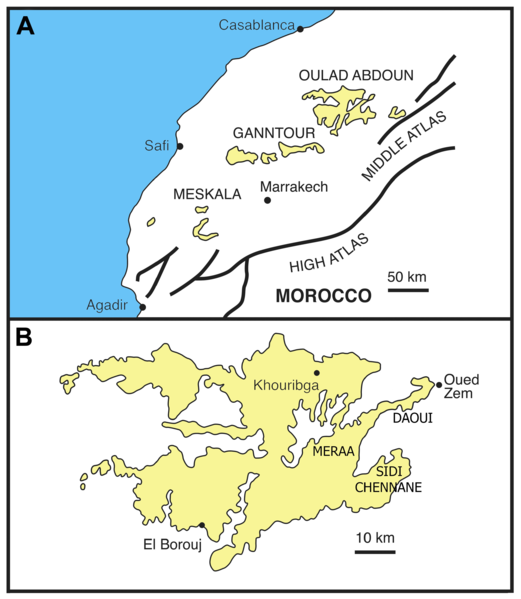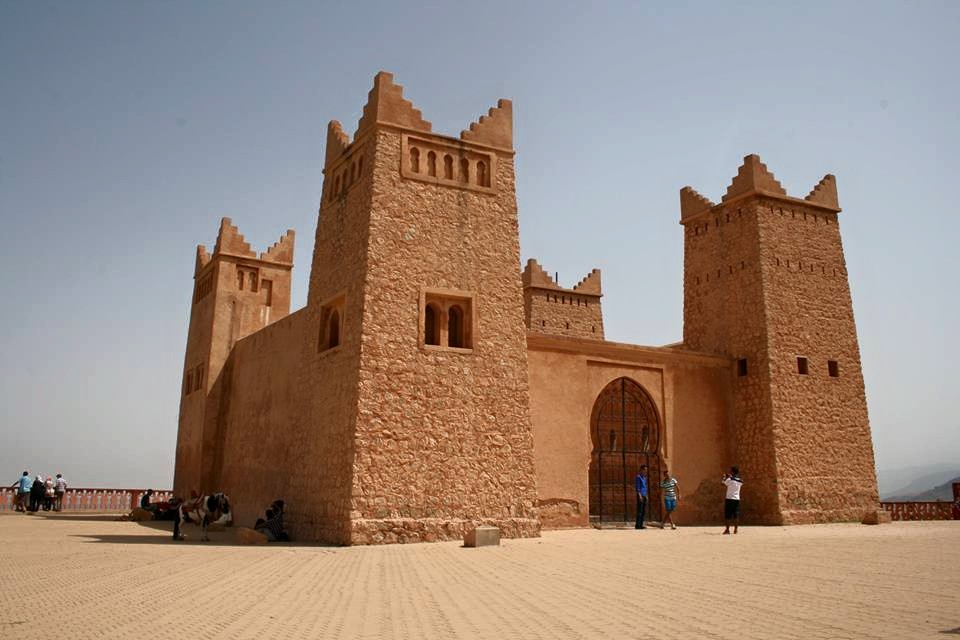|
Khouribga
Khouribga ( ber, ⵅⵯⵔⵉⴱⴳⴰ, xʷribga; ar, خريبڭة, ḵurībga, ) is the capital of Khouribga Province in the Béni Mellal-Khénifra region, Morocco. With a population of 196,196 (2014 census), Khouribga owes its growth to the phosphate deposits nearby. Geography Located at 120 km from Casablanca, 154 km from the capital, Rabat, more than 200 km from the city of Marrakesh, and about 99 km from the city of Beni Mellal and 60 km from the city of Settat. Khouribga is located 820 meters above sea level on the Ouardigha plateau. The city was founded in 1923 by the authorities of the French protectorate when they discovered phosphate in the region, for which Morocco is considered to be the biggest exporter in the world. There are several mines in the province, most notably the mine of Sidi Shennan near the town of Oued Zem, which lies 30 km from the village of Boulanouar (5 km) and the town of Boujniba (10 km) and the vi ... [...More Info...] [...Related Items...] OR: [Wikipedia] [Google] [Baidu] |
Ouled Abdoun Basin
The Oulad Abdoun Basin (also known as the Ouled Abdoun Basin or Khouribga Basin) is a phosphate sedimentary basin located in Morocco, near the city of Khouribga. It is the largest in Morocco, comprising 44% of Morocco's phosphate reserves, and at least 26.8 billion tons of phosphate. It is also known as an important site for vertebrate fossils, with deposits ranging from the Late Cretaceous ( Cenomanian-Turonian) to the Eocene epoch (Ypresian), a period of about 25 million years. Geography The Oulad Abdoun is located west of the Atlas Mountains, near the city of Khouribga. The Oulad Abdoun phosphate deposits encompass some , an area of . The Oulad Abdoun is the largest and northernmost of Morocco's major phosphate basins, which from northeast to southwest, include the Ganntour, Meskala, and Oued Eddahab (Laayoune-Baa) basins. Paleobiota The Oulad Abdoun Basin stretches from late Cretaceous to the Eocene, and contains abundant marine vertebrate fossils, including sharks, ... [...More Info...] [...Related Items...] OR: [Wikipedia] [Google] [Baidu] |
Khouribga Province
Khouribga (in خريبكة ) is a province of Morocco in the region of Béni Mellal-Khénifra. It has a population of 499,144 people, with a majority from Arab root The major cities and towns are# Bejaad # Boujniba # Boulanouare # Hattane # Khouribga Khouribga ( ber, ⵅⵯⵔⵉⴱⴳⴰ, xʷribga; ar, خريبڭة, ḵurībga, ) is the capital of Khouribga Province in the Béni Mellal-Khénifra region, Morocco. With a population of 196,196 (2014 census), Khouribga owes its growth to the ph ... # Oued Zem Subdivisions The province is divided administratively into the following: References Khouribga Province {{BéniMellalKhénifra-geo-stub ... [...More Info...] [...Related Items...] OR: [Wikipedia] [Google] [Baidu] |
Oued Zem
Oued Zem is a city in Khouribga Province, Béni Mellal-Khénifra, Morocco. According to the 2014 Moroccan census The 2014 Moroccan census was held in Morocco between 1 September and 20 September 2014. The census was conducted by the High Planning Commission. [...More Info...] [...Related Items...] OR: [Wikipedia] [Google] [Baidu] |
Béni Mellal-Khénifra
Béni Mellal-Khénifra ( ar, بني ملال - خنيفرة, banī mallāl - ḵunayfira; ber, ⴰⵢⵜ ⵎⵍⵍⴰⵍ - ⵅⵏⵉⴼⵕⴰ, ayt mllal - xnifṛa) is one of the twelve regions of Morocco. It covers an area of 28,374 km2 and recorded a population of 2,520,776 in the 2014 Moroccan census. The capital of the region is Beni Mellal. Geography Béni Mellal-Khénifra is located in the interior of the country. It borders Rabat-Salé-Kénitra to the north, Fès-Meknès to the northeast, Drâa-Tafilalet to the southeast, Marrakesh-Safi to the southwest and Casablanca-Settat to the northwest. In the western and central part of the region is the productive Tadla plain irrigated by the Oum Er-Rbia River. This plain is bracketed by the High Atlas mountains which run through the southern and eastern parts of the region, and the foothills of the Middle Atlas to the north. History Béni Mellal-Khénifra was formed in September 2015 by adding Khouribga Province o ... [...More Info...] [...Related Items...] OR: [Wikipedia] [Google] [Baidu] |
Hattane
Hattane is a town in Khouribga Province, Béni Mellal-Khénifra, Morocco Morocco (),, ) officially the Kingdom of Morocco, is the westernmost country in the Maghreb region of North Africa. It overlooks the Mediterranean Sea to the north and the Atlantic Ocean to the west, and has land borders with Algeria .... According to the 2004 census it has a population of 10,284. References Populated places in Khouribga Province {{BéniMellalKhénifra-geo-stub ... [...More Info...] [...Related Items...] OR: [Wikipedia] [Google] [Baidu] |
Boujniba
Boujniba is a town in Khouribga Province, Béni Mellal-Khénifra, Morocco Morocco (),, ) officially the Kingdom of Morocco, is the westernmost country in the Maghreb region of North Africa. It overlooks the Mediterranean Sea to the north and the Atlantic Ocean to the west, and has land borders with Algeria .... According to the 2004 census it has a population of 15,041. References Populated places in Khouribga Province {{BéniMellalKhénifra-geo-stub ... [...More Info...] [...Related Items...] OR: [Wikipedia] [Google] [Baidu] |
Provinces Of Morocco
In Morocco, the 75 second-level administrative subdivisions are 13 prefectures and 62 provinces. They are subdivisions of the 12 regions of Morocco. Each prefecture or province is subdivided into arrondissements (only in prefectures of some metropolitan areas), municipalities (''communes'', sing. ''commune'') or urban municipalities (''communes urbaines'', sing. ''commune urbaine'') in other urban areas, and districts (''cercles'', sing. ''cercle'') in rural areas. The districts are subdivided into rural municipalities (''communes rurales'', sing. ''commune rural''). One prefecture (Casablanca) is also subdivided into ''préfectures d'arrondissements'' (sing. ''préfecture d'arrondissements''), similar to districts (''cercles'') except they are grouping a few arrondissements instead of rural municipalities. Note: The arrondissements and (urban) municipalities should probably be thought of as fourth-level subdivisions, on the same level as the rural municipalities, but they ar ... [...More Info...] [...Related Items...] OR: [Wikipedia] [Google] [Baidu] |
List Of Cities In Morocco
The basic unit of local government in Morocco is the commune. At the time of the 2014 population census, Morocco was divided into 1538 communes, 256 of which were classified as urban and also called municipalities. The remaining 1282 communes were classified as rural. Urban centres were defined by the High Commission for Planning for some rural communes. The following list includes all Moroccan municipalities with 50,000 or more inhabitants according to the 2014 census, as well as one urban centre of a rural commune whose population also exceeds 50,000 inhabitants. In its 2014 census report, the High Commission for Planning also published a list of the legal populations of seven major Moroccan cities, some of which comprise more than one administrative unit. Those legal population figures are incorporated into the list, and the city definitions they are based upon are provided in the notes. List of cities with 50,000 or more inhabitants See also * List of cities in Western ... [...More Info...] [...Related Items...] OR: [Wikipedia] [Google] [Baidu] |
Settat
Settat ( ar, سطات, siṭṭāt, ber, ⵥⴻⵟⵟⴰⵜ, ẓeṭṭat) is a city in Morocco between the national capital Rabat and Marrakesh. Settat is located by road south of the centre of Casablanca, roughly an hour's drive. It is the capital of Settat Province and is its largest city in both size and population. According to the 2014 Moroccan census, it had a population of 142,250 people, up from 116,570 people in the 2004 census. Settat is above sea level, built on a plateau surrounded by foothills in all directions. The antiquities of Settat include the very old Ismailiya Kasbah distinguished by the statue of a steed which lies at the center of the city. Etymology The name Settat comes from "Ayt Settat" a Senhaja-Berber clan of the Houara tribe.Kitab al-Ansab fi Marifat al-Ashab (The book of Genealogy for the knowledge of the companions), al-Baydaq, reviewed by Abdelwahab Benmansour, pp53, 1971 They belonged to the Masmuda-led Almohad alliance according to al- ... [...More Info...] [...Related Items...] OR: [Wikipedia] [Google] [Baidu] |
French Protectorate In Morocco
The French protectorate in Morocco (french: Protectorat français au Maroc; ar, الحماية الفرنسية في المغرب), also known as French Morocco, was the period of French colonial rule in Morocco between 1912 to 1956. The protectorate was officially established 30 March 1912, when Sultan Abd al-Hafid signed the Treaty of Fez, though the French military occupation of Morocco had begun with the invasion of Oujda and the bombardment of Casablanca in 1907. The French protectorate lasted until the dissolution of the Treaty of Fez on 2 March 1956, with the Franco-Moroccan Joint Declaration. Morocco's independence movement, described in Moroccan historiography as the Revolution of the King and the People, restored the exiled Mohammed V but it did not end French presence in Morocco. France preserved its influence in the country, including a right to station French troops and to have a say in Morocco's foreign policy. French settlers also maintained their rights a ... [...More Info...] [...Related Items...] OR: [Wikipedia] [Google] [Baidu] |
Mosasaur
Mosasaurs (from Latin ''Mosa'' meaning the 'Meuse', and Ancient Greek, Greek ' meaning 'lizard') comprise a group of extinct, large marine reptiles from the Late Cretaceous. Their first fossil remains were discovered in a limestone quarry at Maastricht on the Meuse in 1764. They belong to the order Squamata, which includes lizards and snakes. Mosasaurs probably evolved from an extinct group of aquatic lizards known as Aigialosauridae, aigialosaurs in the Late Cretaceous, Earliest Late Cretaceous with 42 described genera. During the last 20 million years of the Cretaceous period (Turonian–Maastrichtian ages), with the extinction of the ichthyosaurs and Pliosauridae, pliosaurs, mosasaurs became the dominant marine predators. They themselves became extinct as a result of the Cretaceous–Paleogene extinction event, K-Pg event at the end of the Cretaceous period, about 66 million years ago. Description Mosasaurs breathed air, were powerful swimmers, and were well-adapted to livi ... [...More Info...] [...Related Items...] OR: [Wikipedia] [Google] [Baidu] |
Sharks
Sharks are a group of elasmobranch fish characterized by a cartilaginous skeleton, five to seven gill slits on the sides of the head, and pectoral fins that are not fused to the head. Modern sharks are classified within the clade Selachimorpha (or Selachii) and are the sister group to the rays. However, the term "shark" has also been used to refer to all extinct members of Chondrichthyes with a shark-like morphology, such as hybodonts and xenacanths. The oldest modern sharks are known from the Early Jurassic. They range in size from the small dwarf lanternshark (''Etmopterus perryi''), a deep sea species that is only in length, to the whale shark (''Rhincodon typus''), the largest fish in the world, which reaches approximately in length. Sharks are found in all seas and are common to depths up to . They generally do not live in freshwater, although there are a few known exceptions, such as the bull shark and the river shark, which can be found in both seawater an ... [...More Info...] [...Related Items...] OR: [Wikipedia] [Google] [Baidu] |




.jpg)
